|
Penetration of the sole by P3 (the pedal/coffin bone) is one of the worst case scenarios following laminitis, but it is not the end - many horses recover from solar penetration.
The sole is the "skin" that covers P3 and forms a vital barrier between the skeleton and the outside world. Following rotation (and sinking), the tip of P3 may compress solar cells, causing the sole to become flatter and thinner, and potentially leading to bone loss (osteolysis) of P3 and necrosis of the solar corium. This in turn can lead to abscessing, penetration of P3 through the sole, or osteomyelitis. |
In his article "Sinking Coffin Bones", Pete Ramey questions the idea that P3 pierces through or penetrates the sole, pointing out that the sole grows from the bottom of P3, i.e. it is connected to the bone. He suggests that instead of believing that P3 has penetrated the sole, we should ask why the sole is missing - "did the corium abscess and allow the sole to fall off? Did someone cut it off? Did it wear away? Has it failed to grow?".
Every step should be taken to prevent solar penetration. On page 351 of Care and Rehabilitation of the Equine Foot, Pete Ramey says "At the first signs of laminitis, restore P3 to a more natural ground plane, relieve pressure on the walls, and pad the sole with foam rubber – vertical sinking and destructive pressure to the solar corium can be prevented”....."Do not wait. Immediate action to eliminate constant pressure on the solar corium and separational forces on the laminae and the coronary papillae can be more important than anything else you do."
See Sole Support and EVA foam pads for suggestions for padding the soles.
Trimming the foot with P3 penetration of the sole is not particularly different to trimming any foot with rotation:
- restore the palmar angle to normal and provide a good base of support at the back of the foot, encouraging the heels, frog and bars to bear the horse's weight.
- remove the detached wall in front of P3 from weight bearing and further separation, by bringing breakover back to just in front of the perforation, without invading true sole, and beveling the outer wall.
- protect the sole (never remove true sole material in the front of the foot) and relieve pressure on the exposed area with padding, possibly with an air hole directly beneath the rim of P3.
See Laminitis and the Feet and Recognizing Coffin Bone Rotation. Well marked lateral radiographs should always be taken to guide the trim, but if not available, as the sole grows from and is an extension of the bottom of P3, everything behind the exposed P3 is likely to be sole, and everything in front is likely to be laminar wedge/toe. Collateral groove depths should guide the trim.
Horses with solar penetration will usually require soaks and/or poulticing and/or topical applications to prevent or treat infection in the foot, and the feet may need to be kept covered. Baby nappies (diapers) can be useful for draining exudate away from the foot and providing cushioning.
Several professionals report good results from soaking solar penetrations with CleanTrax (available from Equine Podiatry Supplies in the UK). CleanTrax contains a proprietary hypochlorous compound which is non-necrotizing and has no adverse effects on normal, healthy cells but eliminates infection from bacteria, fungi and spores. CleanTrax is used on humans to treat deep-seated nail infections and on open wounds/surgeries to eliminate the risk of secondary infections.
Other treatments suitable for sub-solar abscesses should be suitable for treating P3 penetrations, such as White Lightning, 50% apple cider vinegar:50% water, warm water and Epsom salts (magnesium sulphate) - see Abscesses.
5 of the 14 horses in Dr Debra Taylor's published rehabilitation protocol had solar necrosis/prolapsed solar coriums (all of the horses recovered). Their soles were treated with topical tetracycline and/or metronidazole. During periods of active abscess formation and/or drainage of exudates from the sole, owners were advised to soak the feet 3 to 5 times weekly in either magnesium sulfate solution or 50% acetic acid solution (TLS comment: we suspect this means 50% apple cider vinegar:50% water solution).
See: 2.6. Management Protocol: Medication
Taylor D, Sperandeo A, Schumacher J, Passler T, Wooldridge A, Bell R, Cooner A, Guidry L, Matz-Creel H, Ramey I, Ramey P
Clinical Outcome of 14 Obese, Laminitic Horses Managed with the Same Rehabilitation Protocol
Journal of Equine Veterinary Science Volume 34, Issue 4, Pages 556–564, April 2014
With every case of laminitis, it is essential that the cause has been correctly identified and removed/treated, as well as that the feet are correctly realigned and supported. See Laminitis, EMS or PPID - start here.
For help and support, join Friends of The Laminitis Site.
"Trim was applied to realign the hoof capsule and internal structures using Soft Ride Boots. Her feet were soaked in Clean Trax and wrapped in diapers inside the boots until risk of sole penetration and infection was minimal. Then glue/composite shoes were applied.
Exercise: Turnout in dry lot paddock with continual access to deeply bedded stall, no forced movement."
|
Coal had 25 & 32 degrees dorsal rotation and solar penetration on front feet. His feet were trimmed, soaked, dressed, wrapped. He wore Cloud boots during his rehab.
Charlotte - EasyCare blog |
Chase foundered after an accident, with solar penetration, abscessing, compromised blood flow. His toes were kept short to relieve pressure on the coronary band and prevent further separation, the abscesses poulticed, his feet wrapped in nappies with sugardine.
Christin Ganey Davis - EasyCare blog |
2 cases presented to Dr Debra Taylor of Auburn University with perforations in the sole at the tip of P3.
Source: Auburn Case Work/Documentation- Ivy and Pete Ramey update 3-14-09
For treatment details see: Clinical Outcome of 14 Obese, Laminitic Horses Managed with the Same Rehabilitation Protocol
|
Left: Quarter horse with pedal bone penetration of the sole and extensive sub-solar abscessing.
Right: completely sound 6 months later. Pete Ramey Rehabilitation pictures www.hoofrehab.com |
Left: 14 degree dorsal rotation with P3 penetrating the soles on both front feet.
Right: one year later the same horse dominated local competitions. |
Andrew Bowe - www.barehoofcare.com
Andrew Bowe - www.barehoofcare.com
Sarah Kuyken - www.iskanderrun.com.au
Cynthia Cooper - www.naturalhorseworld.com
Paige Poss - www.ironfreehoof.com
Reading Sole Thickness - Pete Ramey Horseback Magazine June 2013
Why Does My Horse Have a Thin Sole? - Pete Ramey Horseback Magazine July 2013
Understanding the Horse's Sole - Pete Ramey
Clinical Outcome of 14 Obese, Laminitic Horses Managed with the Same Rehabilitation Protocol
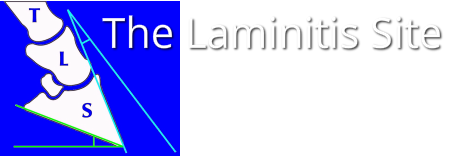
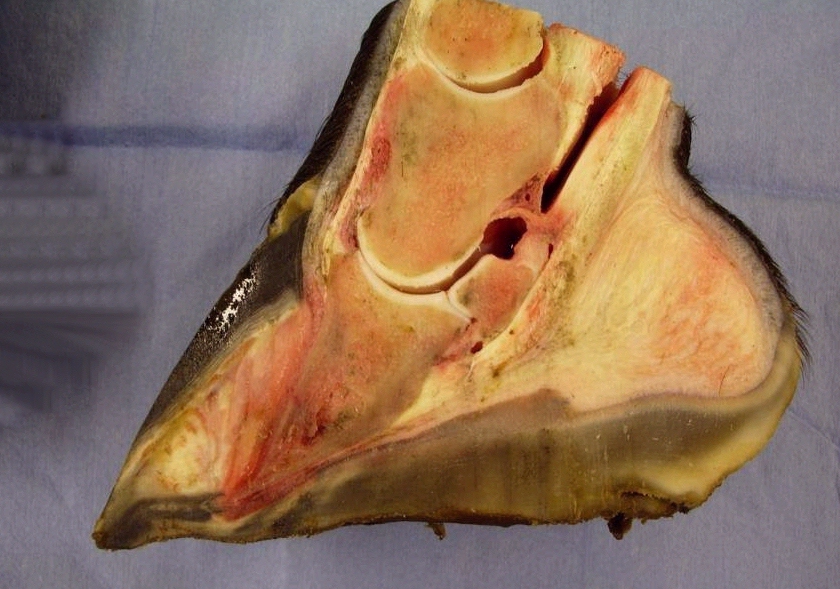
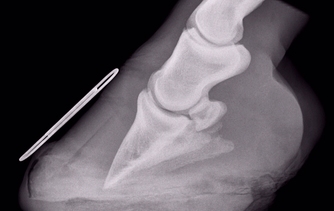
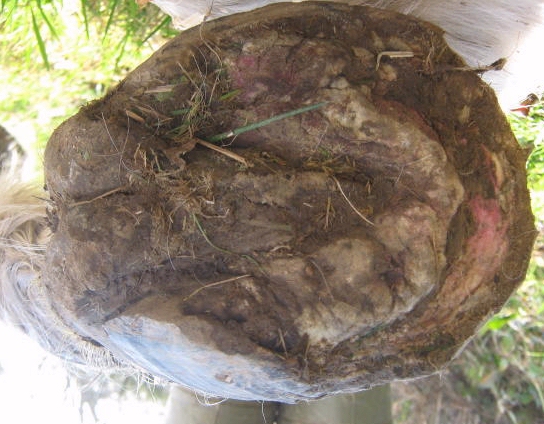
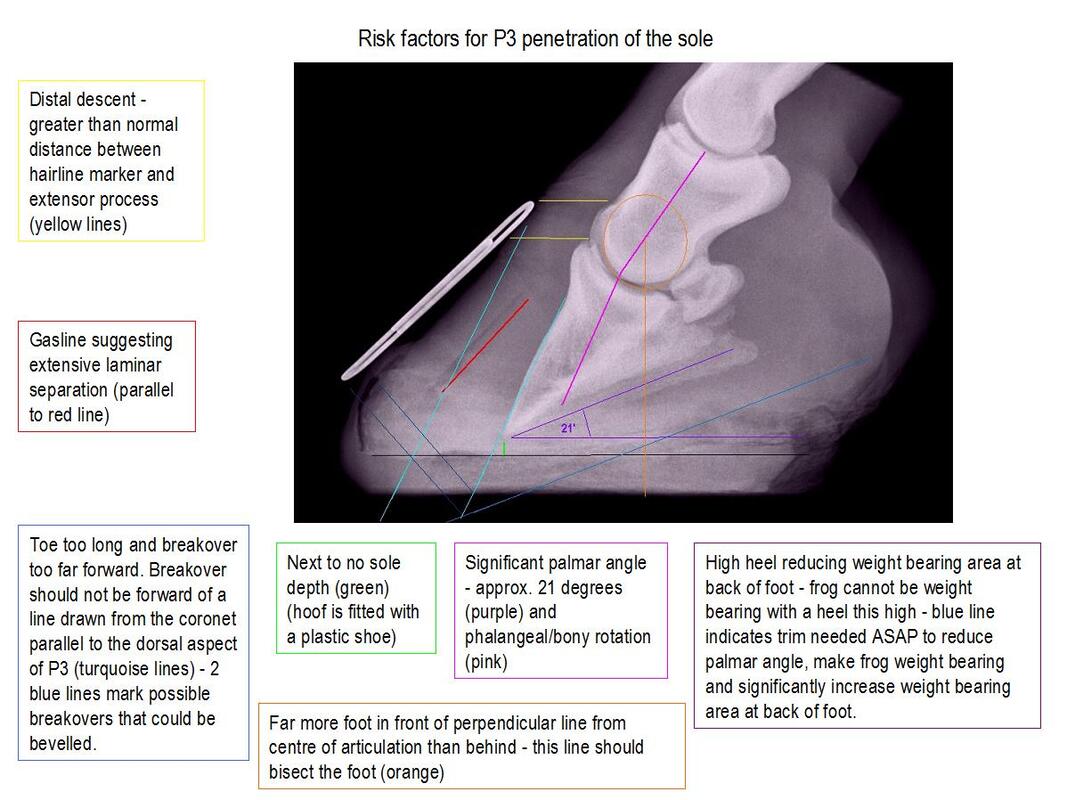
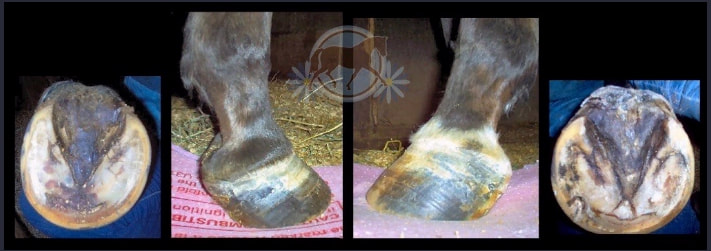
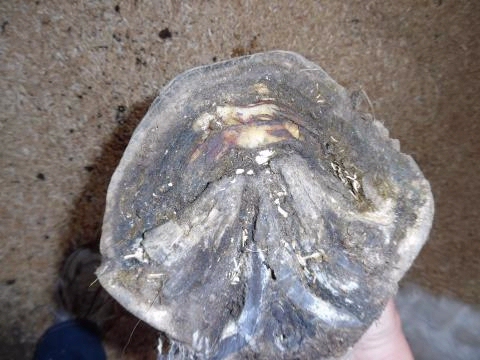
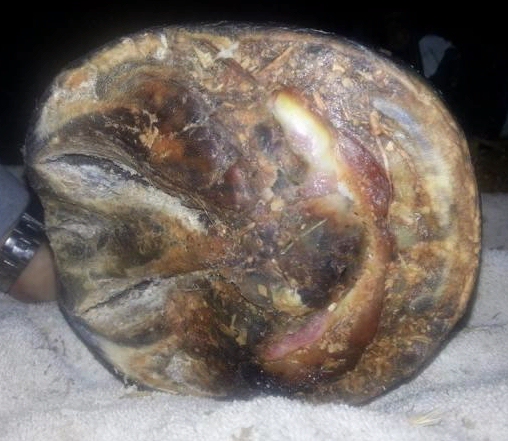
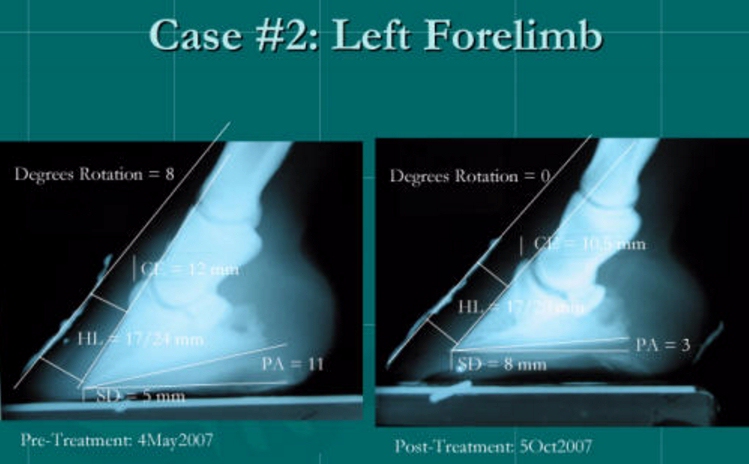
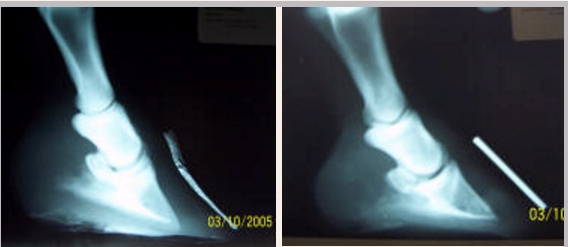
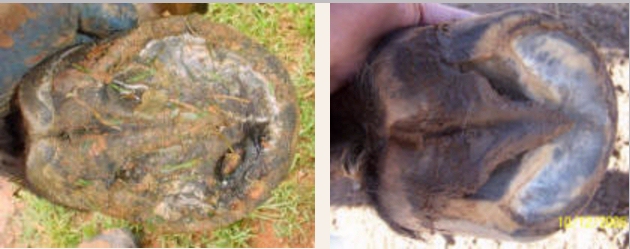
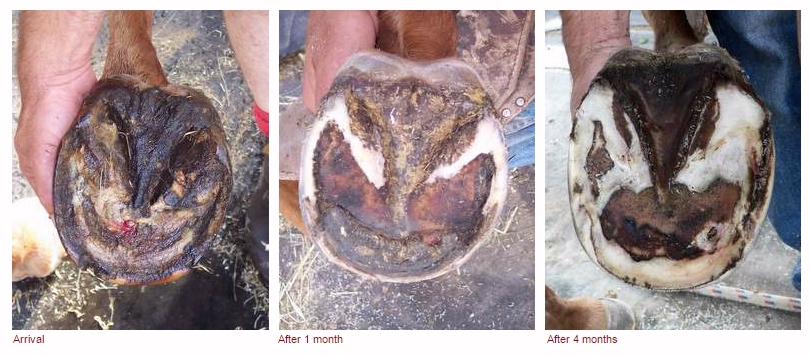
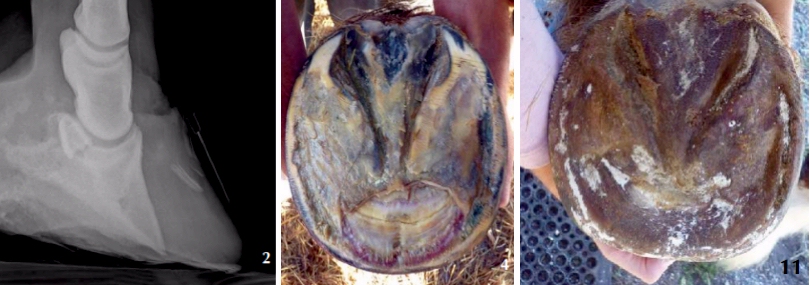
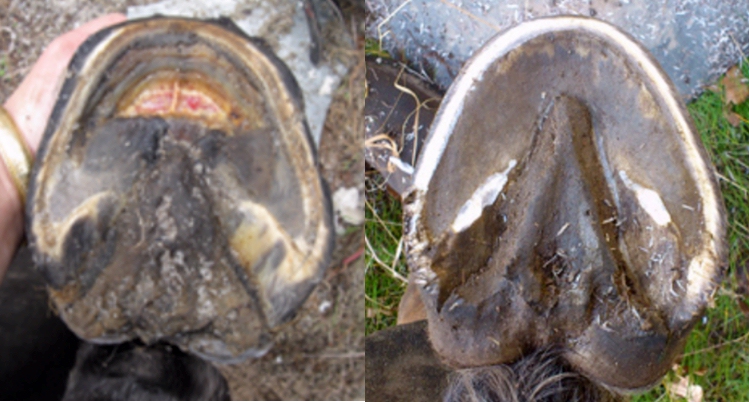
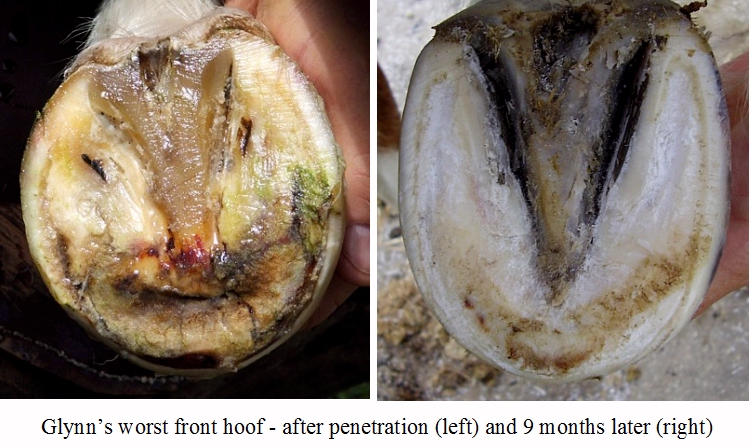

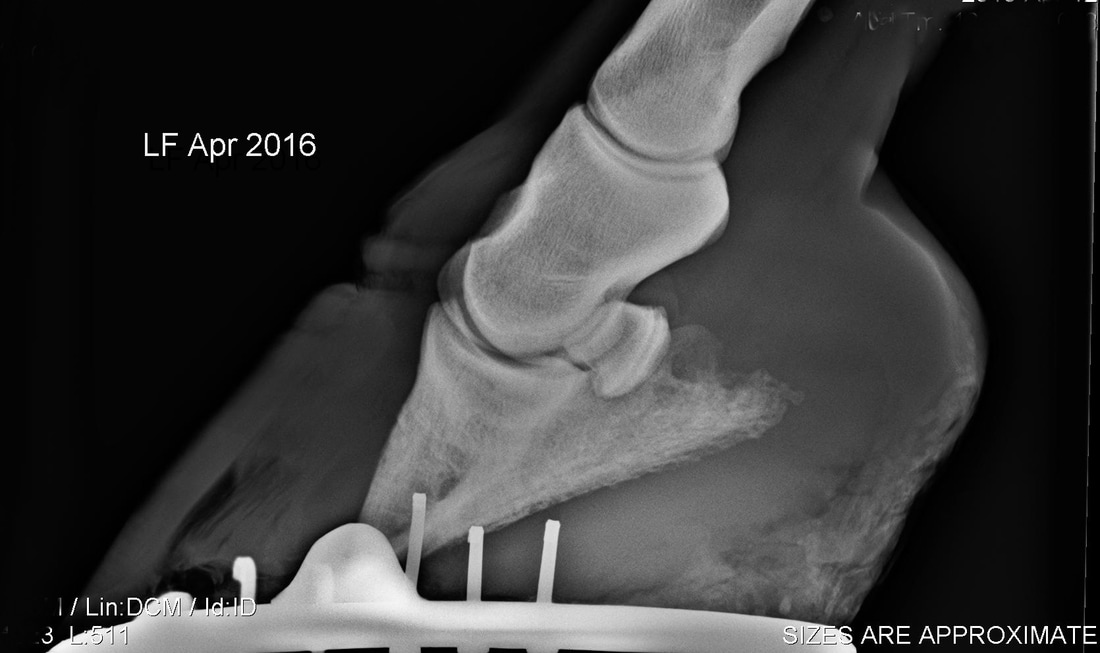
 RSS Feed
RSS Feed